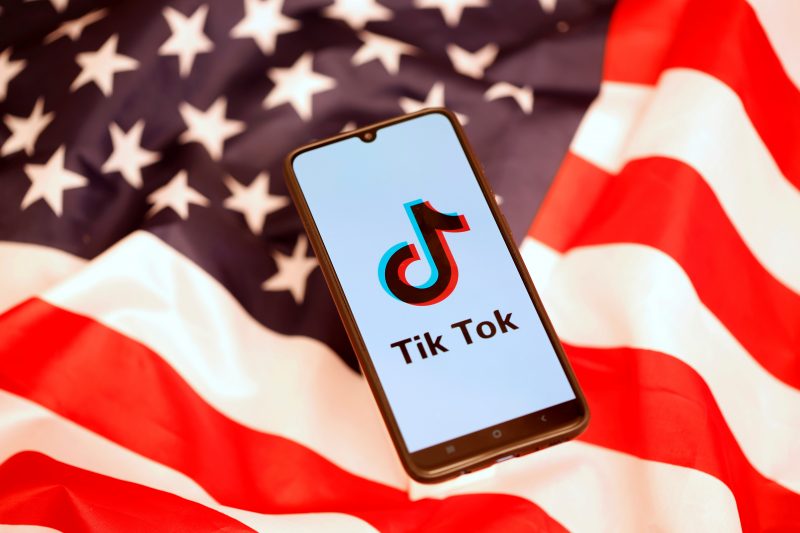Short-video app TikTok has denied reports that it plans to clone its recommendation algorithm for its 170 million US users to create a version that would operate independently of its Chinese parent.
The purported plan was reported by Reuters on Thursday, citing sources with direct knowledge of the efforts.
The report said TikTok’s Chinese parent ByteDance had ordered work on splitting the algorithm — which pairs users with videos to their liking — last year, well before US lawmakers introduced a bill to force the app to sell US operations, or face a ban. The bill was signed into law in April.
Also on AF: Tesla ‘Plans to Roll Out Latest Self-Driving System in China’
TikTok initially declined to comment on the story. But after its publication, the company posted on X that “The Reuters story published today is misleading and factually inaccurate,” without specifying what was inaccurate.
TikTok also posted a passage from its federal lawsuit: “the ‘qualified divestiture’ demanded by the Act to allow TikTok to continue operating in the United States is simply not possible: not commercially, not technologically, not legally. And certainly not on the 270-day timeline required by the Act.”
A Reuters spokesperson responded: “We stand by our reporting”.
If TikTok does proceed to split its underlying source code, it will have a mammoth task on its hands. The separation will require TikTok’s engineers to separate ‘millions of lines of code’ — a task one source described as tedious “dirty work”.
The separation will also take more than a year to complete, sources said. ByteDance’s deadline to sell TikTok or face a ban in the US will expire on January 19, 2025, unless the company wins a lawsuit it brought against the US in May against the forced sale.
A US appeals court on Tuesday set a fast-track schedule to consider ByteDance’s challenges to the new law. It will likely begin oral arguments in September.
Meanwhile, a sale of the app with algorithms is highly unlikely. The Chinese government in 2020 added content recommendation algorithms to its export-control list, requiring a divestiture or sale of TikTok’s algorithm to go through its administrative licensing procedures.
‘Each line of code has to be reviewed’
TikTok has previously said it had no plans to sell its US assets and that such a move would be impossible. Sources reiterated that claim, but added that once the code was split, it could lay the groundwork for a divestiture of the US assets.
Hundreds of ByteDance and TikTok engineers in both the US and China were ordered to begin separating the code over the past few months, they said. Doing so will require engineers to sift through the company’s algorithm and create a separate code base that is independent of systems used by ByteDance’s Chinese version of TikTok, Douyin.
Such a separation will eliminate any information linking to Chinese users and create a new source code repository for a recommendation algorithm serving only TikTok US, sources with direct knowledge of the project told Reuters.
TikTok US will then run and maintain its recommendation algorithm independent of TikTok apps in other regions and its Chinese version Douyin, they said.
But compliance and legal issues involved with determining what parts of the code can be carried over to TikTok are complicating the work, one source said. Each line of code has to be reviewed to determine if it can go into the separate code base, the sources added.
Executives have communicated plans and provided updates on the code-splitting project during a team all-hands, in internal planning documents and on its internal communications system, called Lark, according to one of the sources who attended the meeting and another source who has viewed the messages.
Reuters could not independently verify internal messages.
New algo ‘may not be as effective’
The separation of the algorithm would also cut off TikTok US from ByteDance’s massive engineering development power, the sources said.
The source code for TikTok’s recommendation engine was originally developed by Beijing-based ByteDance engineers in China. It has since been customised for operations in the app’s various global markets, including the US, according to a legal filing.
ByteDance has attributed TikTok’s popularity to the effectiveness of its recommendation engine, which bases each user’s content feeds on how they interact with the content they watch.
If it completes the work to split the recommendation engine from its Chinese counterpart, TikTok management is aware of the risk that TikTok US may not be able to deliver the same level of performance as the existing TikTok.
That’s because it is heavily reliant on ByteDance’s engineers in China to update and maintain the code base to maximise user engagement, sources said.
Separation may still not be enough
The plan provides a rare look into what a technical separation of TikTok’s US operations could be like, and shows to what lengths the app will go to address the bipartisan political risk it faces.
US President Biden and other supporters of the divest-or-ban law argue TikTok gives Beijing far too much access to reams of data on American users. That information could allow China to spy on or influence TikTok’s US users, they have said.
TikTok, on its part, has repeatedly denied giving China’s authoritarian Xi Jinping-government any access to its data.
It has also attempted to make the app’s functioning more palatable to US lawmakers — but is yet to succeed so far.
At one point, TikTok executives considered open sourcing some of TikTok’s algorithm, or making it available to others to access and modify, to demonstrate technological transparency, sources said.
TikTok also created a plan to silo off US user data, called Project Texas, but failed to appease US regulators and lawmakers.
Furthermore, in 2022, TikTok also offered an unprecedented deal to the US government, which included an option to pick the board of directors of its American operations. The deal, reported by the Washington Post this week, would also have given US officials power to oversee and veto new hires, monitor the app’s source code and even a ‘kill switch’ to shut the app, if they continued to see TikTok as a threat.
The Biden Administration declined the offer.
View this post on Instagram
- Reuters, with additional editing by Vishakha Saxena























